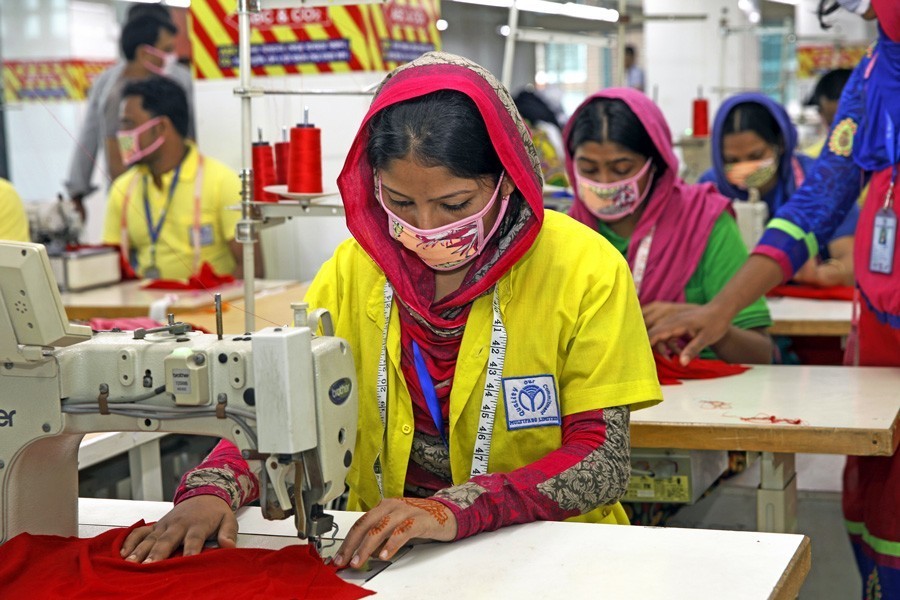After I arrived in Dhaka in 2008 as US Ambassador, it became clear to me that the ready-made garment (RMG) industry was driving much of the good that was happening in Bangladesh. The industry served as the engine of a rapidly expanding economy that was lifting millions out of poverty and providing new opportunities for its many employees, particularly the women. Every day, as I drove to the Embassy, I saw thousands of women walking to their places of employment. As someone whose first five jobs involved working on the floor of a textile factory, I could appreciate to some degree the work that these women were performing; I also appreciated, however, how much it must mean to them and to their families to be taking a salary home and having a voice in how that salary got spent.
At the same time, however, Bangladesh's garment industry faced serious problems. There were regular reports in the media of companies failing to pay workers appropriately; of physical abuse of workers; and of unsafe working conditions. And, finally, there were a series of industrial accidents leading to loss of life and culminating in the Rana Plaza tragedy. I saw that tragedy galvanise the government, the factory owners and the foreign buyers of RMG from Bangladesh and hoped that together they would transform Bangladesh into the home of one of the safest RMG industries in the world. I was thus delighted when the North American importers of Bangladesh garments asked me to join their collective effort to help improve factory safety in Bangladesh's garment industry, the Alliance for Bangladesh Worker Safety (the Alliance).
I first served on the Board of the Alliance, then as the Alliance's Executive Director, and finally as Country Director for Bangladesh. I thus got to witness, and to some extent participate, in the transformation of Bangladesh's most important industry.
That transformation has not been easy: many factories required extensive physical remediation in order to conform with Bangladesh law; workers had to be trained to spot dangers in a factory and to evacuate smoothly in the event of a crisis; and an effective helpline had to be established so that senior management of factories would be informed of and could respond to serious issues that arose on the factory floor. But the work did get done. By the time the Alliance closed its doors on December 31, 2018; the results were impressive:
- 463 of the 530 factories that the Alliance was working with at the end of the programm had finished physical remediation, with the remainder, mostly consisting of factories relatively new to the process, close to finishing. Overall, more than 95 per cent of the issues identified by the Alliance had been fixed by the factories;
- 1.6 million workers had received fire safety training, with more than 1.3 million of those having received refresher training; and;
- The Helpline was receiving over 5,000 calls per month and resolving some 90 per cent of the 600 or so urgent calls it received to the satisfaction of the caller.
Most important, the close collaboration among and the hard work of the Alliance member brands, the factory owners, the factory employees, the BGMEA (Bangladesh Garment Manufacturers and Exporters Association), and the government of Bangladesh resulted in not a single worker life being lost in an Alliance-affiliated factory.
The need for safety in Bangladesh's factories did not end on December 31 last year. Factories are like living organisms that constantly change: factories add extensions or construct new buildings; raw materials and finished product get stored in new places; new machinery increases the weight that the building must bear; and untrained workers, guards or management can make mistakes that might cost lives.
Prior to closing its doors, the Alliance made return visits to 50 factories that had finished their remediation work more than 18 months previously. Those visits showed a number of issues that needed to be addressed. For example, two of the factories had fire pumps that contained no fuel; four of the factories had developed cracks in major structural beams; 16 of the factories had electrical boxes that were overheating; and 15 of the factories had fire escapes that were blocked by materials. Any one of these issues could have led to a deadly accident. Fortunately, the Alliance was able to work with the factories to get all of the issues addressed. The trust and collaborative spirit which was developed with these factories meant that this was achieved quickly and with the minimum of effort.
It became apparent while learning on safety had increased exponentially, systems needed to be developed to help factories that have at one point achieved compliance with national standards continue to meet those standards. The factories themselves will need to develop the systems and skills to remain safe going forward. This would require best practices and protocols to be understood and implemented. Bangladesh's internal capacity in areas such as safety auditing and training will have to grow, workers and management will continue to need safety training, and the safety conditions within the factories will also require validation by entities or organisations judged to be independent and credible by the key stakeholders: government, industry, brands, and customers. These goals are easily within the reach of the Bangladesh RMG industry. And if the industry meets those goals, it will be a global leader in safety.
Now when I come back to Dhaka and walk down the street, observing the positive energy of the city, I feel blessed to have been part of the 0/0/0 story - zero deaths from structural, fire and electrical accidents. Bangladesh will always be in my heart.
James F. Moriarty, a former US Ambassador of Bangladesh, first served on the Board of the Alliance, then as the Alliance's Executive Director, and finally as Country Director for Bangladesh


